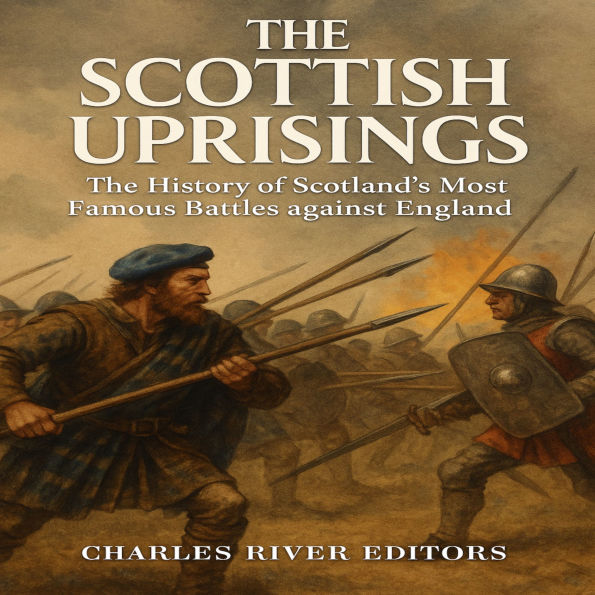From their very beginnings, England and Scotland fought each other. Emerging as unified nations from the early medieval period, their shared border and inter-related aristocracy created endless causes of conflict, from local raiders known as border reivers to full blown wars between their monarchies. Every century from the 11th to the 16th was colored by such violence, and there were periods when not a decade went by without some act of violence marring the peace.
Out of all of this, the most bitterly remembered conflict is Edward I's invasion during the late 13th century. After Edward's death, the English were eventually beaten back at the famous Battle of Bannockburn in 1314, and thus the early 14th century was a period featuring some of Scotland's greatest national heroes, including William Wallace and Robert the Bruce. It still resonates in the Scottish national memory, all the more so following its memorable but wildly inaccurate depiction in the 1995 film Braveheart, which had Scottish audiences cheering in cinemas. William Wallace is one of the most famous freedom fighters in history, and over 700 years after his death he is still remembered as Scotland's beloved hero. But while the movie Braveheart helped make him a household name, and he is commemorated across Scotland as a natural leader and a loyal son of his homeland, he is also “the most mysterious of the leaders of the Scottish resistance to Edward I.”
England has more often been faced with the claims of competing kings and queens than with a period of no monarch at all. The major exception to that rule came in the 11 years between 1649 and 1660, when England was a republic. Following the disastrous reign of Charles I and the civil wars that led to his execution, Parliament and the army ruled England. That situation was one that would not have been possible without the Bishops' Wars that preceded it.
From their very beginnings, England and Scotland fought each other. Emerging as unified nations from the early medieval period, their shared border and inter-related aristocracy created endless causes of conflict, from local raiders known as border reivers to full blown wars between their monarchies. Every century from the 11th to the 16th was colored by such violence, and there were periods when not a decade went by without some act of violence marring the peace.
Out of all of this, the most bitterly remembered conflict is Edward I's invasion during the late 13th century. After Edward's death, the English were eventually beaten back at the famous Battle of Bannockburn in 1314, and thus the early 14th century was a period featuring some of Scotland's greatest national heroes, including William Wallace and Robert the Bruce. It still resonates in the Scottish national memory, all the more so following its memorable but wildly inaccurate depiction in the 1995 film Braveheart, which had Scottish audiences cheering in cinemas. William Wallace is one of the most famous freedom fighters in history, and over 700 years after his death he is still remembered as Scotland's beloved hero. But while the movie Braveheart helped make him a household name, and he is commemorated across Scotland as a natural leader and a loyal son of his homeland, he is also “the most mysterious of the leaders of the Scottish resistance to Edward I.”
England has more often been faced with the claims of competing kings and queens than with a period of no monarch at all. The major exception to that rule came in the 11 years between 1649 and 1660, when England was a republic. Following the disastrous reign of Charles I and the civil wars that led to his execution, Parliament and the army ruled England. That situation was one that would not have been possible without the Bishops' Wars that preceded it.

The Scottish Uprisings: The History of Scotland's Most Famous Battles against England

The Scottish Uprisings: The History of Scotland's Most Famous Battles against England
FREE
with a B&N Audiobooks Subscription

Product Details
| BN ID: | 2940203564238 |
|---|---|
| Publisher: | Charles River Editors |
| Publication date: | 11/13/2025 |
| Edition description: | Unabridged |
Videos

